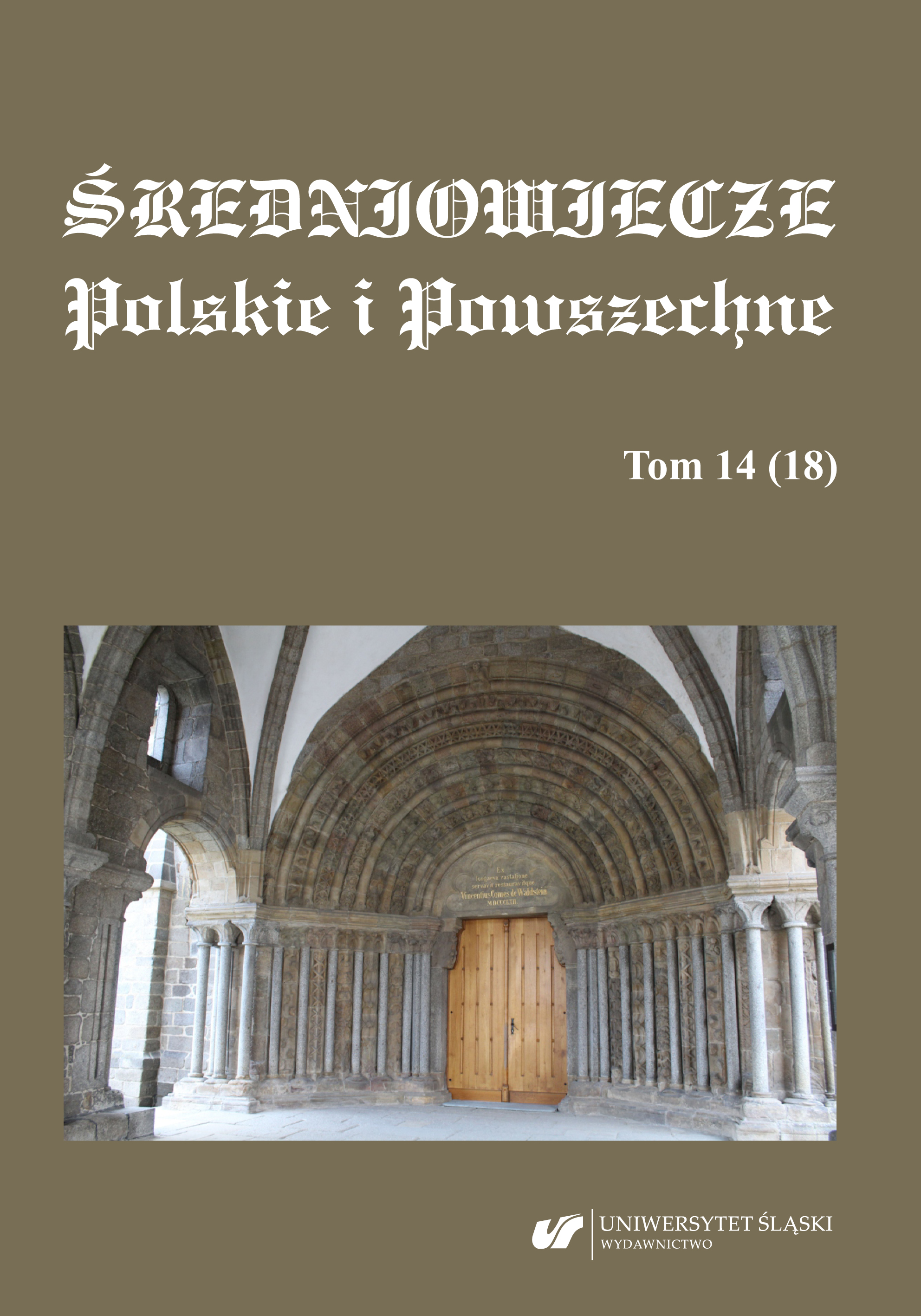Translacja i uposażenie kolegiaty w Raciborzu w 1416 roku. Przyczynek do dziejów Kościoła na Górnym Śląsku w średniowieczu
The Translation and Endowment of the Collegiate in Racibórz in 1416. A Contribution to the History of the Church in Upper Silesia in the Middle Ages
Author(s): Jerzy SperkaSubject(s): Christian Theology and Religion, History of Church(es), Local History / Microhistory, Political history, Middle Ages, 13th to 14th Centuries, 15th Century
Published by: Wydawnictwo Uniwersytetu Śląskiego
Keywords: Racibórz; church in Silesia; Silesian princes; John II Żelazny (the Iron)
Summary/Abstract: The beginnings of the collegiate church of Racibórz are associated with the effects of events that took place at the end of the thirteenth century in Silesia, i.e., the violent conflict between the Duke of Wrocław Henry IV Probus and the bishop of Wrocław Thomas II, who was supported by the Dukes of Opole. In 1288, the bishop of Wrocław, repaying his allies for the help they provided, but also as an expiation for the settled dispute, founded a collegiate church of St. Thomas Cantapurian at the chapel in Racibórz. He also provided it with a material for its functioning, endowing it with tithes from the bishop’s treasury. In the years around 1288—1292, an impressive gothic chapel was erected in the castle, where the collegiate chapter was located. In the following years, the collegiate church of Racibórz remained under the care of subsequent princes who ruled in Racibórz, the son of Przemysław, Leszek, and later representatives of the Czech Přemyslids from the Opava line, who in 1337 took over the Duchy of Racibórz. Nicholas II, and then his son John I and grandson John II Żelazny (the Iron). These princes made further foundations for the chapter and its castle seat, increasing the salary and establishing new prebends. In 1416, John II the Iron, with the consent of the bishop of Wrocław, Wacław, Duke of Legnica, moved the collegiate church located at the Racibórz Castle at the chapel of St. Thomas Cantapurai to the parish church of the Assumption of the Blessed Virgin Mary in the city of Racibórz and established and endowed there prebends for the provost, dean, 12 canons and as many vicars. The reason for the relocation was the problematic location of the collegiate church at a small chapel, which at that time was already insufficient for the growing needs, especially the erection of new prebends. In addition, canons and vicars living in the city, due to the daily closure of the city and castle gates, had difficulties with punctual celebration of services. The new salary of the Racibórz collegiate church consisted of a part from the time of its establishment (the end of the thirteenth century) and a part established anew. In 1416, the prince erected and planted a new chapel, while in 1422 he re-endowed the custody. The transfer of the collegiate church from the chapel in the castle to the town, to the parish church of the Assumption of the Blessed Virgin Mary by Prince John II the Iron undoubtedly contributed to its significant development in the following years. The collegiate church gained great support from the authorities and the bourgeoisie of rich Racibórz.
Journal: Średniowiecze Polskie i Powszechne
- Issue Year: 14/2022
- Issue No: 18
- Page Range: 185-199
- Page Count: 15
- Language: Polish

